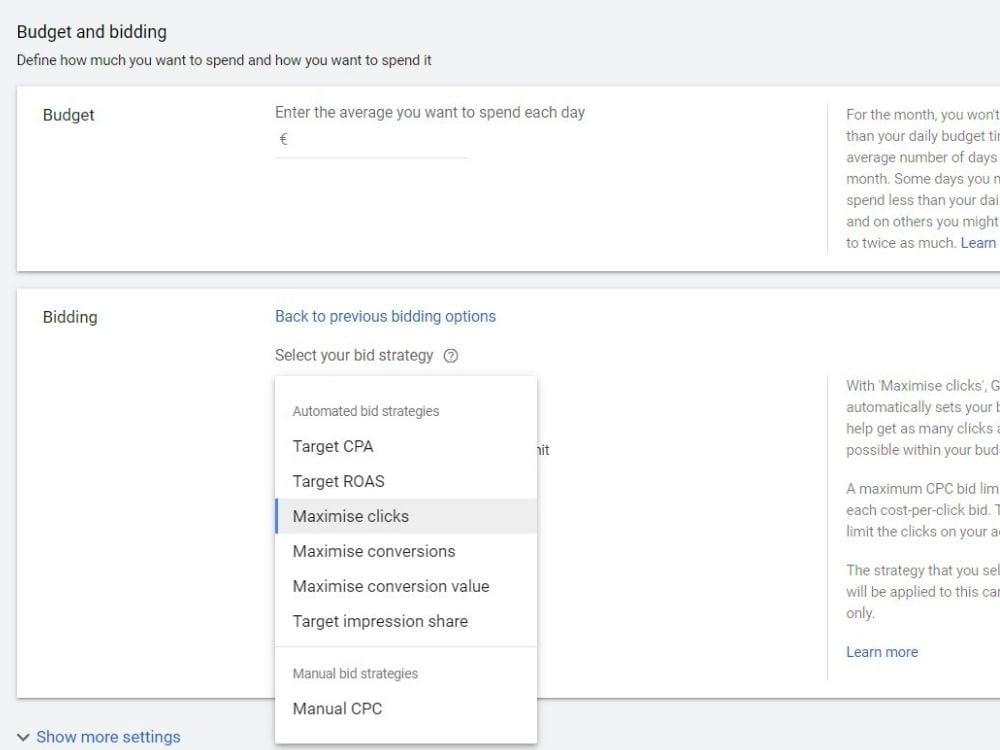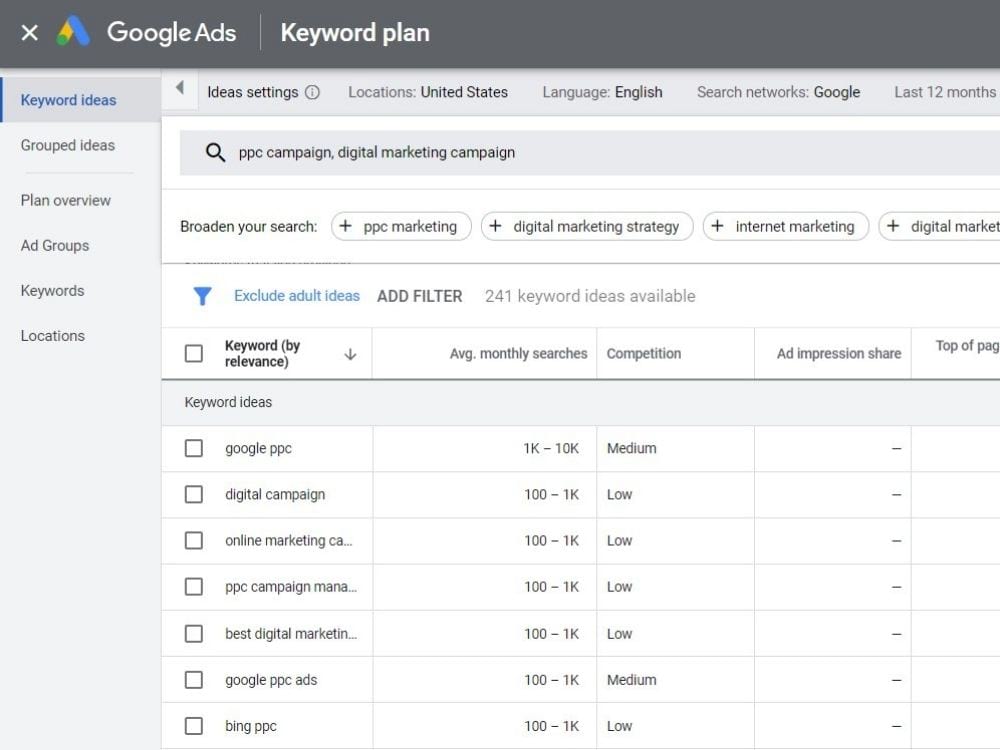Congratulations! Your PPC campaign is up and running. That’s the first milestone achieved but where next? Over the next few weeks, you’ll monitor its progress by analyzing defined metrics and studying the data you’re gathering (well, we hope you are).
Managing a PPC campaign is far harder than it looks. It’s more than just seeing how many click-throughs to your website have been received, let alone lead conversions. Bounce rates, click through rates vs open rates, click-to-open rates, conversion rates; it can be a minefield.
So, what do you do if your PPC campaign isn’t delivering the results you hoped for? Well, before you stop the campaign, are you sure you are managing it effectively?
Managing your PPC Campaigns
A PPC advertising campaign is one of the most effective tools for generating B2B sales and leads. However, unless your PPC campaign strategy is well-thought-out with a clearly defined marketing strategy, it’s unlikely to maximize conversions.
With 68% of marketers stating that paid advertising is either ‘very important’ or ‘extremely important’ to their overall marketing strategy, you can see why managing PPC campaigns effectively is needed. But how do you plan a PPC campaign and subsequently manage it to get the best ROI? First and foremost, any PPC campaign has to align with the company’s overall digital marketing strategies and business goals.
Ask the following questions; how is the campaign to contribute to reaching your goals? What is the aim of the PPC campaign, i.e. to raise brand awareness, generate leads or increase sales? Who is your target audience? What type of PPC campaign are you going to run? What metrics will you use to measure the campaign’s success? With the right planning of a PPC campaign, how can you manage it effectively?
Set realistic, data-driven goals
With any PPC campaign management process, setting goals that are realistic and measurable is an important first task. They need to be clearly defined together with the metrics you will use to measure the campaign against those conversion goals.
If you’re looking to generate leads, search ads would be the best option to encourage people to click through to a specific landing page. Each ad group you create should have a separate landing page from which it is easy to track lead conversions via the PPC campaign tool. Bant’s PPC management platform is a great example of a lead generation tool that effectively tracks performance and helps to maximize conversions.
33% of marketers use PPC advertising to increase brand awareness, predominantly through display ads. This type of PPC campaign allows marketers to add imagery and videos, as well as linking to a specific landing page, measured using engagement via social media or direct traffic.
Decide your bid strategy

Most marketers allocated a specific budget to their PPC advertising campaigns. Your bid strategy is based on how much you are prepared to pay per click, i.e. it is the cost-per-click (CPC). Whilst your maximum CPC should allow your ads to be displayed for high-ranking keywords, it shouldn’t be so high that you spend your marketing budget too quickly.
If you are new to PPC ads, you may opt to use an automated bid optimization strategy which will adjust your bids automatically according to keyword performance. Examples of bid strategies include:
- An enhanced CPC bid strategy will bid on keywords or phrases that have a greater likelihood of conversions.
- A target CPA enables marketers to adjust their bids in real-time in order to achieve their conversion goals more quickly.
- Maximize conversions is a much broader conversion optimization strategy which marketers use to maximize a fixed budget.
As with all advertising campaigns, online or offline, research your competitors. There are a variety of tools available that will help with competitive analysis. For example, Google Ads has its Auction Insights tool that will provide a list of your competitors that are using the same keywords as you are.
Keyword research
Keyword research is vital to any PPC ad campaign. Did you know that ad placement and audience targeting was the top optimization tactics used by advertisers in 2020? Tools like KeywordSpy allows you to view the keywords, ad copy and even the ad spend. Through this, the software will provide you with a list of keywords and the ad combination that could be profitable for your company.
For each ad group that’s created, there needs to be a set of keywords. It is these keywords that search engines will use to determine where and when your ad should be displayed. Optimizing your ad groups and ad content to ensure you are reaching the right target audience is crucial to a PPC ad campaign’s success.
According to Smart Insights, being at the top of SERPs – the search engine results pages – increases a company’s click-through-rate (CTR) by as much as 31%. Ensuring your ad is displayed in a relevant search query is the aim of any ad campaign. Most PPC campaigns provide targeting options.
For example, Google Ads has different options for different campaigns, such as search ads where audience targeting and keywords are the principal options. Display ads, on the other hand, have a wider variety of targeting options such as ad placement targeting. The types of ad targeting include:
- Placement targeting.
- Audience targeting.
- Contextual targeting.
- Topic targeting.
Once you have an idea of the keywords and phrases your competition are using, you’ll be able to determine the best keywords for your PPC campaign. Create a list of keywords that are top priority and are most likely to be used in a search query by internet users. Google Ads online keyword research tool can help you, as well as identify any other related keywords or phrases you may have missed.

Each ad group should have a minimum of 5-6 keywords that are specifically related to your business, and no more than 30 per ad group. Any more than that and you run the risk of diluting the ad group, and therefore the advertising campaign.
Whilst you need your target keywords, you also need to stop the wrong keywords from being displayed, i.e. keywords that aren’t relevant to your business. Using negative keywords will help in avoiding money being wasted where your ad may show up in an irrelevant search query. There are three main types of negative keywords:
- Broad keyword match.
- Phrase keyword match.
- Exact keyword match.
Retargeting
With an average rate of cart abandonment globally is 75%, using PPC ads for a retargeting campaign is an effective tool in sales conversion. The key to successful retargeting PPC campaigns is keeping it specific. For example, don’t target all visitors to your website, target those that were either viewing a particular product on your page or those who abandoned their cart.
Optimizing your ad content
At this stage, you’ve put all the parameters in place. Next is optimizing your ad content. You have a matter of just 30 characters for your headline, 90 characters each for your two descriptions, and 15 for each of your ad paths. That adds up to a total of just 300 characters; remember its characters, not words. So, the content of your ad has to not only grab people’s attention quickly but also persuade them to click on it.
36% of marketers report that creating content that is engaging and/or visual consistently one of their biggest struggles. You also need to consider search engine optimization (SEO) for your content. So, what are the key elements to creating ad content that will engage your visitors?
- Headline – this is the first thing that people see following a search query and it has to be compelling enough for them to click on your ad. So, your headline needs to be:
- Concise, relevant and to the point.
- If you can, incorporate numbers to build trust.
- Make it personal and use positive words that will generate an upbeat emotional reaction.
- Put the most important information in the headline, such as offers, promotions or discounts.
- If there’s space, add a call to action (CTA).
- Main body – the main content of your ad is where you expand on your headline. Depending on the PPC campaign format you’re using, you can add text, images, videos or a mix of these. Visual content is creating waves in the PPC advertising world; a huge 96% of shoppers find videos helpful in making their purchasing decision. Whether it’s a text ad or display ad, to optimize your content to increase conversions, it needs to be:
- Precise, clear and engaging.
- Use a font that is easy to read and looks professional.
- Ensure your key points, such as product features or USPs, add value and persuade people to click on your CTA.
- With mobile traffic having a growth rate of 125%, making sure your ad is mobile-friendly is imperative. So, keep the sentences short so they can be easily read on mobile devices.
- Don’t forget to add your company logo.
- If you are using images or videos, ensure they are high quality.
- Call to Action (CTA) – this is your final opportunity to engage people and get them to click on your ad. Your CTA has to be powerful and compelling. It should incorporate:
- Power verbs that persuade people to take action.
- Interesting enough for people to want to click and find out more information.
- Be clearly visible and readable. Make sure it is placed where people can easily see and grabs their attention.
- Any offers, discounts or promotions that create a sense of urgency.
- Bright colors that are visually appealing.
Landing Pages

Your landing pages also need to be attractive, engaging and include the CTA that’s in your ad, such as signing up for a service or buying a product. Within your ads, you will need to add the destination URL, which is your landing page. Avoid adding the same landing page for each ad you create. Select a landing page that is directly relevant to your ad content.
Sending a visitor to a landing page that is either not relevant to your ad content, or to just a home page is a waste of money. So, if your ad is promoting a special offer on a specific product, ensure the landing page is the product you are promoting for higher conversion rates.
The landing page design should be clean in layout, responsive, easy-to-use and include the clearly visible CTA. The product image, product title and product description must be easy-to-read and provide sufficient information so the buyer knows exactly what they are buying. The landing page content should mirror the content of your ad, too.
Analyze Data & Optimize
It’s critical to monitor and track the performance of your PPC ad campaign. Using the metrics you defined in the planning process, track your conversion rates and ensure they are in line with your conversion goals. The key metrics to track within your PPC campaign are:
- Clicks received on each ad.
- Cost-per-Click (CPC) tracks how much you are paying for each click on your ad.
- Click-through-Rate (CTR) is a percentage figure and measures the views on ads that resulted in clicks. It also determines how much you pay-per-click.
- Impressions show how many times your ad has been viewed.
- Conversion rate is the percentage of people that have clicked on the CTA on your landing page.
- Cost per conversion is how much it cost to generate a lead.
- Quality Score (QS) decides the positioning of your ad.
- Return on Ad Spend (ROAS) is the return on your ad investment. This is the revenue you have earned on your ad spend.
Tracking your campaign in terms of relevant traffic as well as search-driven traffic will help identify which ads, keywords and ad groups are more successful than others. Using this information, you’ll be able to adjust your campaign accordingly.
Mistakes to Avoid with your PPC Campaigns
Creating a successful PPC ad campaign takes practice and you may not get it right the first time. Here are some key mistakes to avoid.
- Not conducting keyword research – you might think you know the keywords that are relevant to your business but without research, you could end up using keywords that are irrelevant and costly.
- Not using ad extensions – even the best of marketers can miss this one. Although it depends on the type of ad you are running, there are some Google ad extensions that are worth adding to the campaign to increase engagement and the click-through-rate. They are:
- Location extension.
- Callout extension.
- Sitelink extension.
- Price extension.
- Landing pages – if you use landing pages that are not optimized or are irrelevant to the ad campaign content, it will affect the quality score of the campaign and reduce conversions significantly.
- Not adding negative keywords – if you don’t add negative keywords, your ad is likely to show up in irrelevant search queries. In addition, you will be paying for clicks that are not high quality.
- A lack of tracking and monitoring – this is probably one of the biggest mistakes to avoid. Setting up your campaign and then leaving it alone will not bring you success.
- Spreading your budget too widely – don’t try and bid on too many keywords. Focus your budget on the products, services or areas you are targeting to maximize spend. Your impressions percentage will give you a good idea of where you’re spreading bids too thinly.
What Are the Potential Pitfalls of PPC Marketing?

However good PPC ad campaigns are, there are also pitfalls.
- With Google Ads, you will always be at the mercy of their algorithms and auction when it comes to your ad positioning. But ensuring your keyword selection is the best, your ad content is powerful and engaging, and your landing pages are impactful, you are more likely to see a return on your investment.
- Without careful PPC campaign management, costs have the potential of getting out of control. For example, keyword bidding can cause an overspend but if you use keywords that are less expensive, you can bring your costs down and the campaign in line with your marketing goals.
- A lack of campaign monitoring and tracking of performance can easily lead to the failure of your campaign.
Utilizing a PPC campaign management company or management agency, such as Bant, will ensure that your ad campaign is successfully tracked and measured.
Adjusting your PPC Campaigns During COVID-19
The current COVID-19 pandemic, enforced lockdowns and ongoing restrictions have had a great impact on businesses worldwide, negative and positive. Small and medium-sized companies, in particular, are cutting back on paid advertising.
For certain industries, it’s been a difficult decision whether to continue with PPC or not. Certain businesses just don’t have the budget or are able to offer their target customers anything at the moment. That said, it isn’t a good idea to completely stop your PPC campaign. With more people at home, they have more time to surf the internet and plan their future.
In these circumstances, PPC ad campaigns need to be adjusted, perhaps offering a different service or product. For example, many restaurants, pubs and cafes are redefining their services and offering home delivery.
Proper PPC campaign management can help you get the most out of your PPC campaigns. It’s a great way to begin reaching new customers online, and it can be made even easier with the Bant dashboard and automation.
FAQs
How many types of PPC campaigns are there?
There are eight main types of PPC campaign:
- Search advertising.
- Display advertising.
- Social media advertising via social media platforms.
- Remarketing.
- Sequential remarketing
- Google Shopping.
- Local service ads.
- Gmail sponsored promotions.
How is a PPC campaign structured?
The main steps to structuring a PPC campaign are:
- Set the campaign goals and define the measurement metrics.
- Decide which PPC ad platform you are going to use, i.e. Google Ads.
- List your best keywords and phrases. Select your negative keywords.
- Define and set your bid strategy for your keywords.
- Create ad content that is engaging and is directed to the relevant landing page.
- Monitor and track your ad campaign’s performance, and adjust accordingly.
What are PPC tools?
PPC tools are software solutions that help you to set up and manage PPC campaigns, such as analytics platforms, performance tools, campaign and bid management tools, competitor research tools, keyword search tools, landing page tools and PPC optimization tools.
What key activities are undertaken when managing a PPC campaign?
The key activities when managing a PPC campaign are:
- Selecting the best keywords and leveraging negative keywords.
- Fine-tuning your targeting.
- Linking to the right landing pages.
- Creating multiple ad groups.
- Optimizing your ad content.
- Optimizing your bid strategy.
- Using remarketing campaigns.
- Track and monitor campaign performance and conversions.
Where do PPC ads appear?
PPC ads appear according to search queries in search engines. They are displayed on top or below organic search results and to the right-hand side.
How much does a PPC campaign cost?
Whilst the cost of a PPC ad campaign depends on a number of different factors, on average a Google Ads CPC is $1 to $2 for the Google Search Network, and lower for the Google Display Network. Typically, PPC campaign costs start around $500.
What is the difference between CPC and PPC?
CPC, or cost-per-click is a campaign performance metric. PPC, or pay-per-click, is an online advertising or marketing channel

